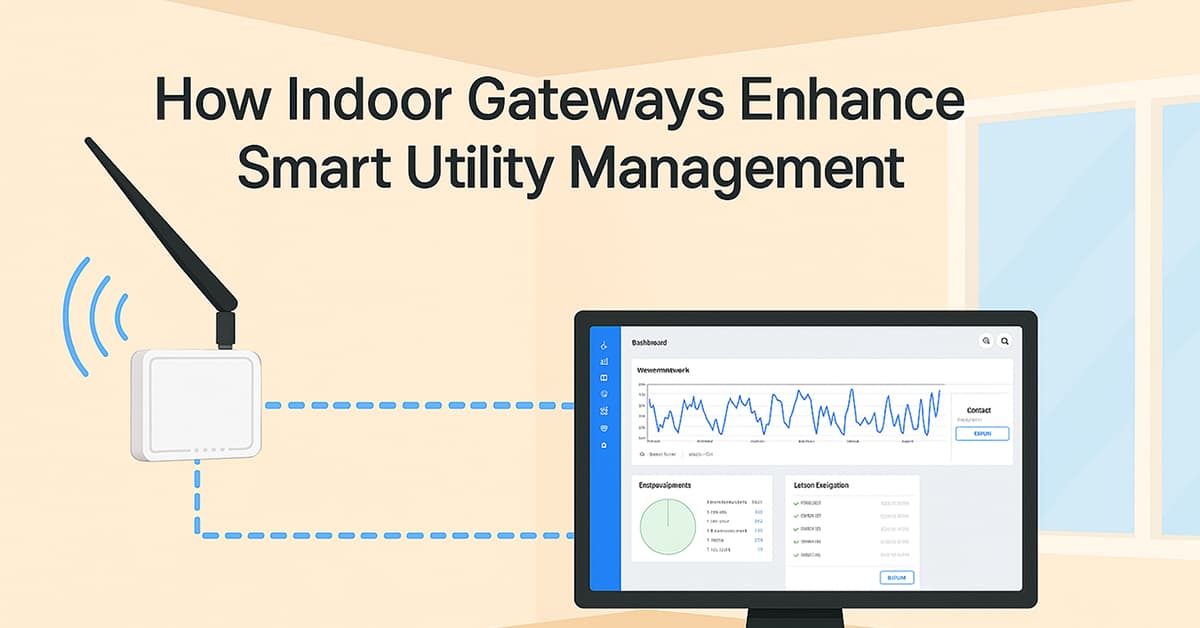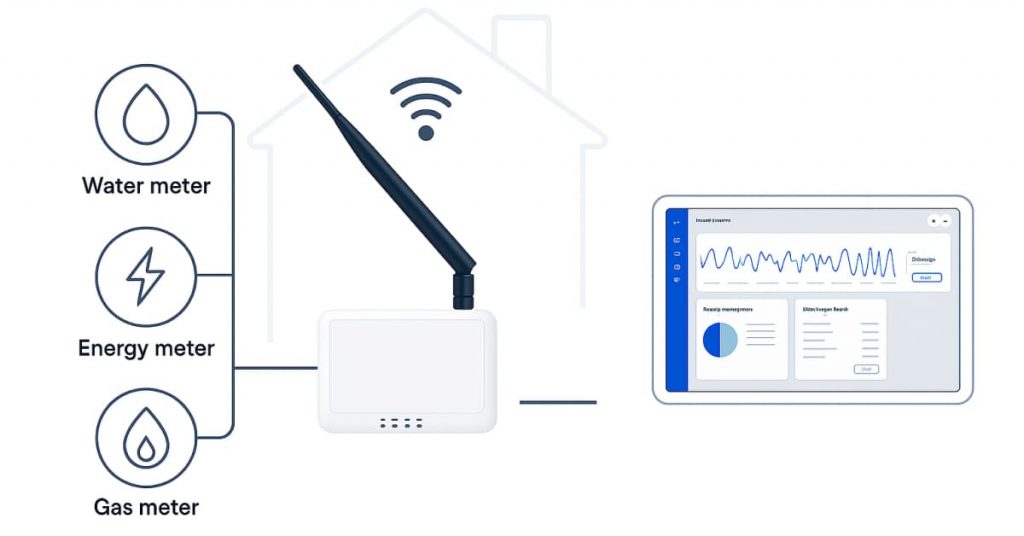
The rise of smart utility systems has revolutionized how homes, offices, and industries manage resources such as water, gas, and electricity. At the heart of this transformation are indoor gateways—devices that act as a bridge between smart meters and utility management systems. These gateways ensure seamless data transmission, enhance efficiency, and unlock the full potential of IoT-enabled utility monitoring. This article explores how indoor gateways, such as the Jooby Indoor Femto Gateway, play a pivotal role in smart utility management.
Understanding Indoor Gateways in Utility Management
An indoor gateway serves as a communication hub for smart meters and utility management platforms. Utilizing technologies like LoRaWAN (Long Range Wide Area Network), these devices enable reliable and energy-efficient data transmission over long distances. They are particularly suited for small to medium-sized spaces, such as homes and small offices, where centralized data collection is crucial for effective utility monitoring.
The gateway collects data from connected smart devices and transmits it to a cloud-based platform or local server. This real-time communication enables users to monitor, analyze, and optimize their utility consumption, improving both efficiency and sustainability.
How Indoor Gateways Work in Smart Utility Systems
Indoor gateways operate by establishing a seamless connection between smart devices and utility management systems. Here is how the process unfolds:
- Data Collection Smart meters and sensors measure utility consumption (water, gas, electricity) and send the data to the gateway.
- Data Transmission The gateway utilizes LoRaWAN or other wireless technologies to transmit the data to a centralized platform, ensuring reliable and energy-efficient communication.
- Data Processing The transmitted data is processed and analyzed, providing actionable insights for optimizing resource usage.
- User Access Consumers and property managers can access this information in real-time through mobile apps or dashboards, enabling informed decision-making.

Advantages of Indoor Gateways for Smart Utility Management
Enhanced Connectivity and Range
Indoor gateways leverage advanced technologies like LoRaWAN to provide robust communication, even in challenging environments. Their ability to connect multiple devices ensures efficient data aggregation and reduces the need for multiple network points.
Cost Efficiency
By centralizing data collection and reducing dependency on manual meter readings, indoor gateways lower operational costs. They are a cost-effective solution for small-scale deployments in residential and office spaces.
3. Real-Time Data Insights
The integration of IoT-enabled indoor gateways allows for real-time monitoring of utility consumption, enabling proactive resource management. For example:
- Early detection of water leaks or gas anomalies prevents wastage and potential hazards.
- Monitoring electricity usage during peak hours helps optimize energy consumption.
Scalability for Multi-Device Networks
Indoor gateways are designed to support multiple devices within a compact space. This scalability makes them ideal for small offices and residential complexes, where several utility systems need to be managed simultaneously.
Sustainability and Energy Efficiency
The energy-efficient design of technologies like LoRaWAN minimizes the power consumption of both the gateway and connected devices, aligning with global sustainability goals.

Use Cases: Indoor Gateways in Action
Residential Homes
Smart indoor gateways provide homeowners with comprehensive insights into their utility consumption. For instance:
- Tracking water usage to identify and fix leaks.
- Monitoring gas consumption for safety and efficiency.
Small Offices
For small businesses, indoor gateways streamline resource management by:
- Ensuring accurate utility tracking and billing.
- Identifying energy-intensive processes and optimizing them to reduce costs.
Multi-Unit Buildings
Indoor gateways centralize data collection in apartment complexes, simplifying utility management for property managers and promoting transparency for tenants.
The Jooby Indoor Femto Gateway: A Game-Changer in Utility Management
The Jooby Indoor Femto Gateway exemplifies how indoor gateways enhance smart utility management. Key features include:
- Compact Design: Ideal for indoor installations, ensuring minimal space requirements.
- LoRaWAN Technology: Provides long-range, energy-efficient communication.
- Scalability: Supports multiple devices, making it perfect for residential and small office applications.
- Ease of Integration: Seamlessly connects with existing smart metering systems for a hassle-free setup.
Explore the Jooby Indoor Femto Gateway to revolutionize your utility management.
How Indoor Gateways Complement Outdoor Systems
While indoor gateways are designed for small-scale applications, they work in tandem with outdoor LoRaWAN gateways to support large-scale deployments. Outdoor gateways are suited for industrial and expansive residential setups, providing wide-area coverage and high scalability. Together, they create a comprehensive network that addresses diverse utility management needs.
Final Thoughts
Indoor gateways are an indispensable component of modern utility management systems. By enabling seamless communication, real-time monitoring, and efficient data processing, they empower homeowners and property managers to optimize resource usage and reduce operational costs. As technologies like the Jooby Indoor Femto Gateway continue to evolve, the potential for smart utility management becomes limitless.Enhance your utility management with advanced indoor gateway solutions from Jooby’s product range, and take the first step towards smarter, more sustainable utility systems.
